New Delhi: Delhi’s anti-pollution warriors are not taking no for an answer. From parents to doctors, ordinary citizens are stepping up to fight for clean air, healthier lungs, and a better future for the city’s children.
They’re in courts demanding action, in hospitals treating pollution’s toll, and knocking on doors to rally parents to advocate for their children’s right to breathe freely. It’s not just a winter battle, but a year-round war.
Also Read: Delhi NCR RWAs are the new pollution crusaders. If only govt would give them timely answers
Arjun Gopal: the toddler who petitioned court
Arjun Gopal is nine years old, but he’s already one of the country’s most famous names in the fight against pollution. When he was just a baby, Arjun, along with two other toddlers, petitioned the Supreme Court with a simple demand: clean air.
This petition led to the first-ever ban on firecrackers in Delhi-NCR in 2017. A three-judge bench ruled in favour of the toddlers, taking into consideration their plea about the adverse impact of air pollution on children’s lungs. The case, now widely known as the “toddlers’ petition”, had an even bigger win. It prompted the Indian government to leapfrog directly from Bharat Stage (BS)-IV to BS-VI fuel standards—cleaner, more energy efficient, and implemented three years ahead of schedule.
Arjun Gopal vs Union of India wrenched air pollution from dinner table conversations to the public forum. Six-month-old Arjun’s demand to breathe clean air drew both applause and criticism in India’s most polluted city. The firecracker ban faced pushback— from popular figures like Chetan Bhagat to various op-eds— but it also set the stage for a larger movement.
The propelling force behind this game-changing case were the parents of the 3 toddlers—Arjun, Aarav, and Zoya.
“Eventually, (children) are the citizens of India with the same fundamental rights and the same duties. Why shouldn’t they get to breathe clean air from their birth?” said Arjun’s father Gopal Sankaranarayanan, a lawyer.
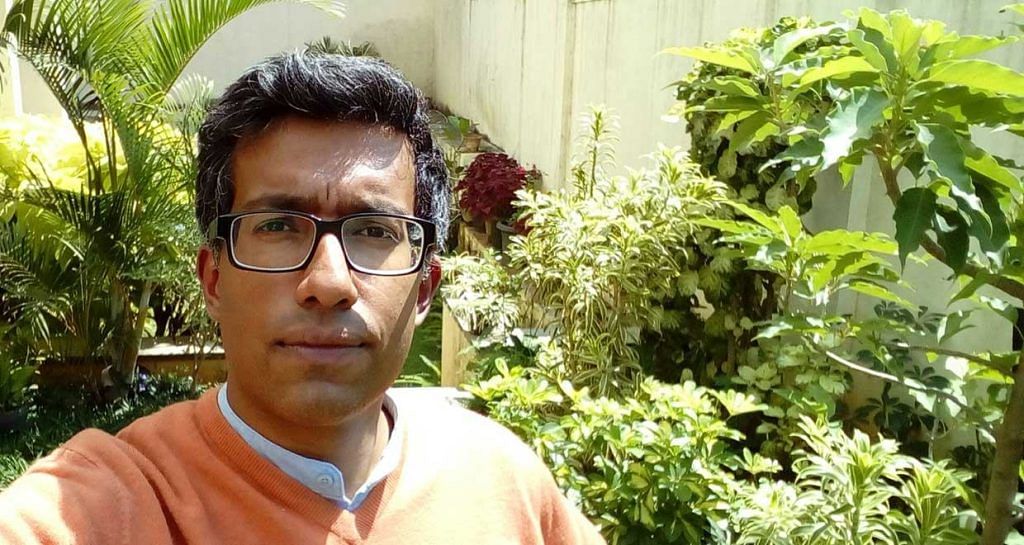
He recalls sitting down for lunch one winter afternoon in 2015 with his advocate wife Haripriya Padmanabhan and their lawyer friends Gauri Rao, Saurabh Bhasin, Amit Bhandari, and artist Madhu Bhandari. At the time Arjun was six months old. Their conversation soon swivelled to Delhi’s pollution, and the damning statistics about the damage it inflicts, especially on the lungs of young children. But as much as he wanted to, Sankaranarayanan knew he couldn’t just upend his family and leave the city.
“Haripriya and I are both Supreme Court advocates. The court is here, so we’re here. The chances of us shifting were really not that high,” said Sankaranarayanan.
However, doing nothing wasn’t an option either. Delhi’s AQI was breaking records year after year. And as someone who worked within the judiciary and a staunch supporter of advocacy, Sankaranarayanan decided that the time for action was now.
We would love playing outdoors, having picnics in the Delhi winters. All that is over now. We just spend too much on air purifiers and escape the town every Diwali because, no matter what, people just won’t learn.
-Gopal Sankaranarayanan, lawyer and Arjun Gopal’s father
The lunch table conversation gave birth to a revolutionary idea—to file a petition in the Supreme Court against Delhi’s air pollution problem, but on behalf of the three couples’ toddlers. The petition sought strict action against polluting industries, vehicular emissions, stubble burning, construction dust, and firecrackers. It argued that these pollutants infringed upon the toddlers’ right to breathe clean air and thus violated Article 21—the Right to Life— of the Indian Constitution.
What followed was a landmark judgment in Arjun Gopal vs Union of India, banning the sale of firecracker sales in Delhi. This was much to the ire of a section of society that complained about the ban hindering them from fully celebrating Diwali, but it was also celebrated by many.
Seven years later, however, Delhi’s air quality remains abysmal. The petition may have set legal precedents, but enforcement has been patchy.
Sankaranarayanan still appears in court, pressing authorities to follow through on anti-pollution guidelines, but his family has had to make their own adjustments to survive Delhi’s toxic winters.
“We would love playing outdoors, having picnics in the Delhi winters. All that is over now,” he said. “We just spend too much on air purifiers and escape the town every Diwali because, no matter what, people just won’t learn.”
Bhavreen Kandhari: ‘Warrior Mom’ with an army
Bhavreen Kandhari’s awakening to the impact of pollution began in her 20s when she was jogging in New York. She noticed she was more energetic there than in Delhi.
“That’s when I first started researching the impacts of air pollution on people’s health,” said Kandhari, who lives in Delhi. But it was only when she had twins–born prematurely in 2003—that she decided to fight for their lungs and their future. And she built an army of mothers to do it.
Starting small, Kandhari began by reaching out to families in her neighbourhood. Today, Warrior Moms—an NGO she co-founded in 2020—has grown from 10 moms in Delhi to a pan-India movement. Over the years, they’ve launched several campaigns, like #ChulhaFree to demand a reduction in the prices of cooking fuel to phase out wood stoves, and #DhoomDhamakaWithoutPatkha, a movement to create awareness about the health impact of bursting firecrackers on Diwali.
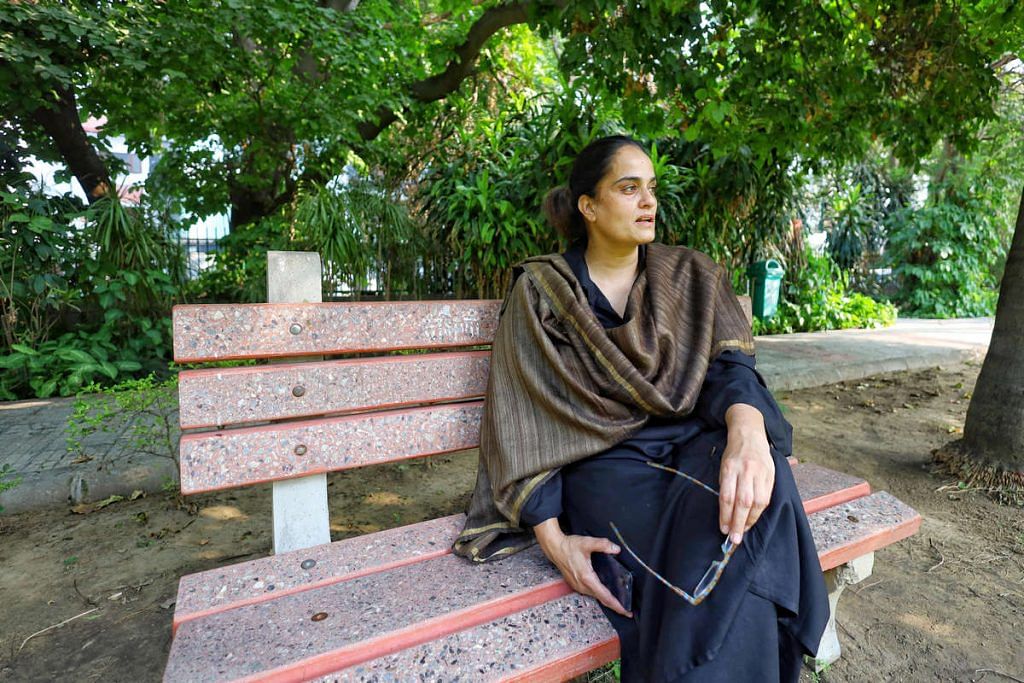
They organise public talks with experts, educate parents on how pollution harms children’s health, report environmental violations like illegal constructions and garbage burning, and hold marches. Their goal— legislative interventions for clean air.
Kandhari has taken her battle to the global stage, representing Warrior Moms at the annual Climate of Parties (COP) a few times. In her personal capacity, she has petitioned in key environmental cases. She challenged the Delhi Metro Rail Corporation (DMRC) for illegally felling trees during its Phase-4 construction, and fought the Union government over the Central Vista project, citing its environmental impact.
From protecting the city’s trees to pushing the government and judiciary to address deteriorating air and water quality, Kandhari and her army are holding the authorities accountable.
The wake-up call for her was when doctors suggested that Delhi’s high levels of air pollution could have been one of the reasons behind the premature birth of her twins. As they grew up, her daughters consistently suffered from colds and coughs as pollution levels spiked.
“The elders in my family would say ‘allergy haiga’, but how could two kids face the same allergic symptoms at the same time?” she said.
Dr GC Khilnani: pulmonologist who can’t retire
Dr Gopi Chand Khilnani hasn’t found the time to retire. Every winter, his OPD is lined with patients complaining of chest congestion, shortness of breath, and all kinds of respiratory distress. When he is not attending to his planned patients, he is on-call for an emergency case.
“Delhi’s pollution is a slow killer. We have been seeing that exposure to such high pollution levels directly relates to the number of people turning up in the emergency rooms,” said Khilnani, 70.
One of the top pulmonologists in the country, he was the head of the department and professor at Delhi’s All India Institute of Medical Sciences (AIIMS) for over 35 years. During his tenure at AIIMS’ department of pulmonology and sleep medicine, Dr Khilnani also held positions in the Indian Society of Critical Care and Medicine, the Indian Chest Society, and the National College of Chest Physicians.
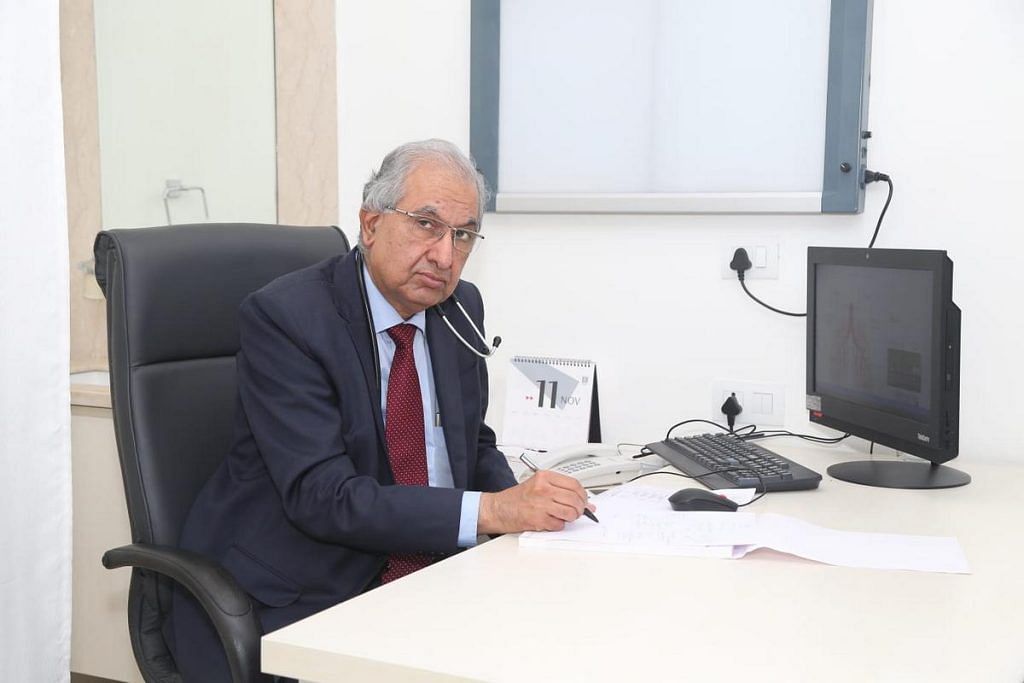
After a long and distinguished career, Dr Khilnani had planned for a calm retired life. But his expertise in pollution-related ailments, compounded by his patients’ insistence, pulled him back into the field.
“I strongly believe that educating the public will go a long way to fight this annual pollution problem. The more people get aware of the dangerous impacts of such poor air quality on their and their family’s health, the better the possibility of a change,” he said.
Today, Dr Khilnani is the chairperson of the PSRI Institute of Pulmonary, Critical Care and Sleep Medicine and serves as a member of the World Health Organisation (WHO) Technical Advisory Group on Global Air Pollution and Health.
He warns that prolonged exposure to pollution levels like those in Delhi-NCR can have devastating health consequences. Beyond common symptoms like a persistent cough, sneezing, runny nose, and itchy eyes, pollution can trigger serious conditions like bronchitis, asthma, heart attacks, and strokes.
For the government, and even for a common healthy adult, pollution might be an annual discussion, but in emergency rooms it is a matter of life and death
-Dr Gopi Chand Khilnani, pulmonologist
“Long-term exposure to high pollution can also significantly reduce life expectancy,” he said.
Each ‘pollution season’, Dr Khilnani drafts and circulates guidelines to help Delhi’s residents cope with haze. These include practical dos and don’ts, explanations of how specific pollutants affect health, and ways for vulnerable populations to prevent their health conditions from worsening as the air grows more poisonous.
“As doctors we see what pollution can do to the health of people. For the government, and even for a common healthy adult, pollution might be an annual discussion, but in emergency rooms it is a matter of life and death,” Dr Khilnani said.
Dipankar Saha: ex-CPCB air lab head fighting seasonal amnesia
Dipankar Saha gets angry when he switches on the news to find everyone talking about “alarming pollution” levels in Delhi-NCR during winter. The “doomsday images and graphics” in the background do nothing to temper his ire
“Why do agencies wake up only when the air quality index rises? No one bothers about it throughout the year,” he said.
Until a few years ago, Saha was heading the air lab of the Central Pollution Control Board (CPCB), the apex air quality monitoring body in the country. Pollution management must be a year-long exercise, not just a seasonal ritual, he said.
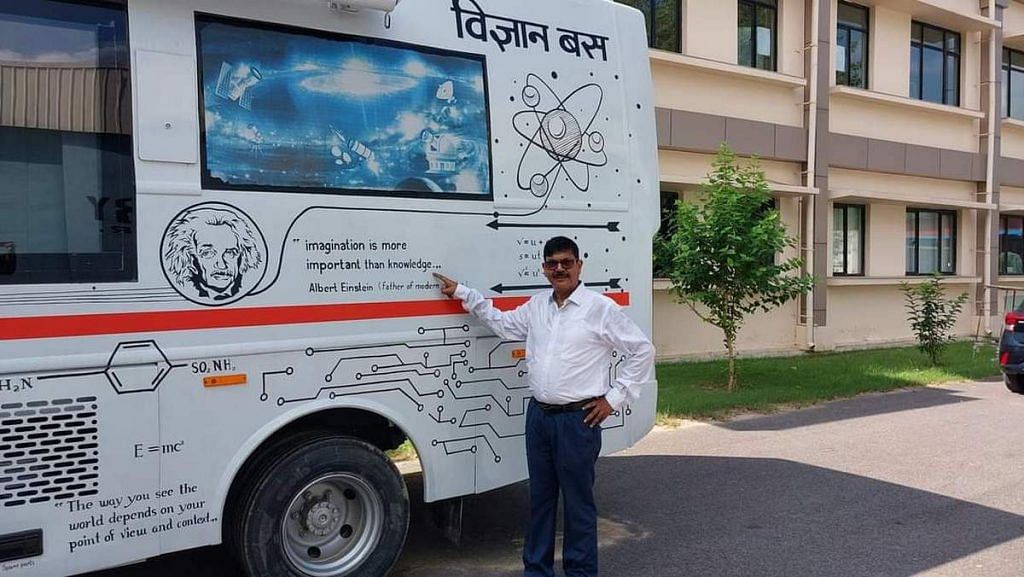
While at the CPCB, Saha was instrumental in setting up Delhi’s vast network of air quality monitors. The city now has over 40 monitoring stations, jointly managed by the CPCB and the state-run Delhi Pollution Control Committee (DPCC), and Saha was the man behind this.
He also headed the team that identified locations of monitoring stations, managed data, and calibrated systems to ensure a constant flow of pollution data for the city.
And though he’s now retired, he still plays a pivotal role in keeping the national capital’s pollution crisis in the public eye.
Delhi gets the focus because it is the capital, but other cities in the region are equally or more polluted. There has to be a plan to solve this problem in an integrated manner
-Dipankar Saha, former chief of the CPCB air lab
“Our plan was to involve citizens and the media in a larger public conversation around pollution management. We were successful to a great extent. Now people have become more aware of the issue and are more involved,” he said.
At 65, Saha has not given up on the city he calls home. He’s also lending a hand to other cities and states. He’s working with government agencies in Agra, Kanpur, and even West Bengal to set up their ambient air quality monitoring stations and prepare their emergency action plans.
For him, pollution is a year-long, all-India problem—not just Delhi’s Sisyphean battle.
While Saha acknowledges the work being done by agencies and governments to tackle pollution in the Indo-Gangetic Plains, he is clear that more integrated and coordinated efforts are needed.
There is still a major lag in understanding the sources, meteorological factors, and sectoral contributions that exacerbate the problem across northern India, according to him. Without better data and detailed studies, he warns, real progress will remain elusive.
“Pollution cannot be tackled in isolation,” Saha said. Delhi gets the focus because it is the capital, but other cities in the region are equally or more polluted. There has to be a plan to solve this problem in an integrated manner.”
Also Read: Delhi’s five pollution hotspots
Jyoti Pande Lavakare: class meetings to Care for Air
Delhi-based NGO Care for Air has raised a generation of clean air warriors in the city’s schools, arming them with hard facts about the extent and impact of Delhi’s air pollution. But this decade-long movement began quietly—in the libraries and classrooms of Delhi schools—where journalist Jyoti Pande Lavakare first gathered parents to take on the city’s hazardous air.
Lavakare never set out to start a clean air movement. But in 2009, after four sunny years in California, she moved her family back to Delhi—and into what felt like a gas chamber. Winters hit hardest. Her children’s eyes burned, their noses ran, and their throats ached. Back then, no one saw air pollution as a public health crisis, let alone something worth fighting over. But for Lavakare, it was impossible to look away.
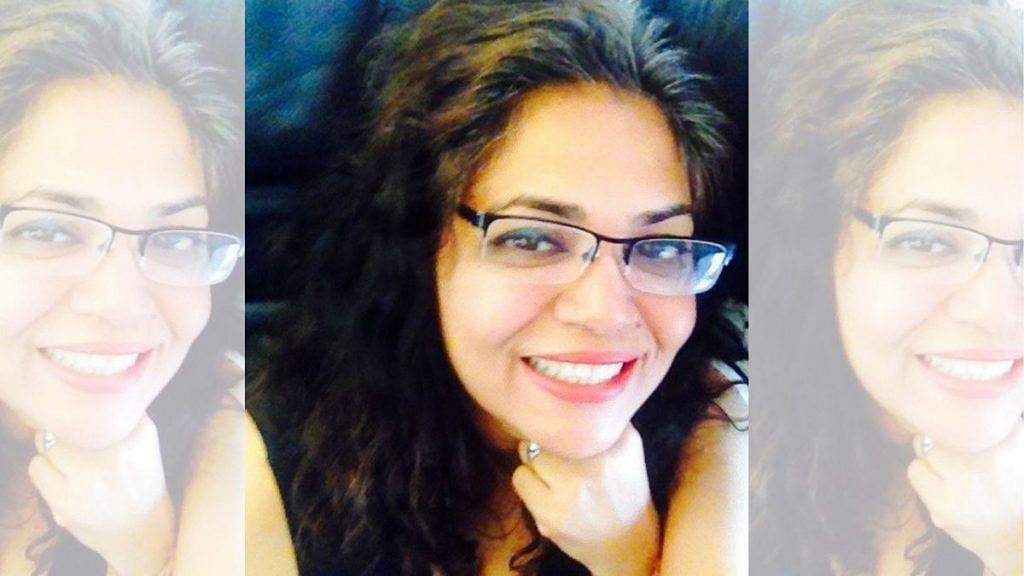
“When you’re young you think you’re immortal,” she said. Only when you become responsible for others’ lives—like your children—do you start thinking of mortality and realise just how vulnerable you are.”
Care for Air’s main motive was to first make people aware about how harmful air pollution is.
“And we began with the most effective place—schools,” said Lavakare.
She started with relentless parent-teacher meetings, flyers, notices, and presentations at her own children’s school. Soon, other parents got just as involved. Over time, CFA expanded its reach, roping in lawyers, doctors, academics, and policymakers to tackle Delhi’s pollution crisis from every possible angle.
Pollution isn’t rocket science. There are enough solutions for it, if only governments and leaders have the resolve
-Jyoti Pande Lavakare, co-founder of Care for Air
CFA’s methods were as creative as they were impactful. They trained students to be ‘Ambassadors’ who spread the clean air message, went to hospitals, and used different languages to reach larger audience. They even petitioned the Delhi Board of Education to stop hosting sports days during the winter smog. At her own children’s school, Lavakare, as president of the PTA, ran workshops for students, parents, and teachers about air pollution.
“My PTA secretary, a dynamic high court lawyer, was able to convince nearly every parent to send their kids on school buses rather than using their own cars for drop-off and pickup,” said Lavakare.
But in 2017, when her own mother was diagnosed with Stage IV lung cancer, the stakes of Delhi’s air pollution crisis became even more painfully clear.
“The doctors said, ‘You’re the clean air activist right? You should know what living in Delhi her whole life has done to her lungs’,” recalled Jyoti, whose mother died three months after she was diagnosed.
While CFA continued its clean air evangelism, Lavakare’s own resolve began to waver. After more than a decade of seeing no change in the air quality, she didn’t object to her kids leaving Delhi for their higher studies. Over time, she became a ‘pollution migrant’ herself, leaving Delhi every winter to stay in a remote village in South India.
“You know they say about fight or flight. Well, I fought it for a good long decade, but eventually, we had to resort to flight,” she said.
But that doesn’t mean Lavakare sees pollution as an unsolvable problem.
“Pollution isn’t rocket science,” she said. “There are enough solutions for it, if only governments and leaders have the resolve.”
(Edited by Asavari Singh)



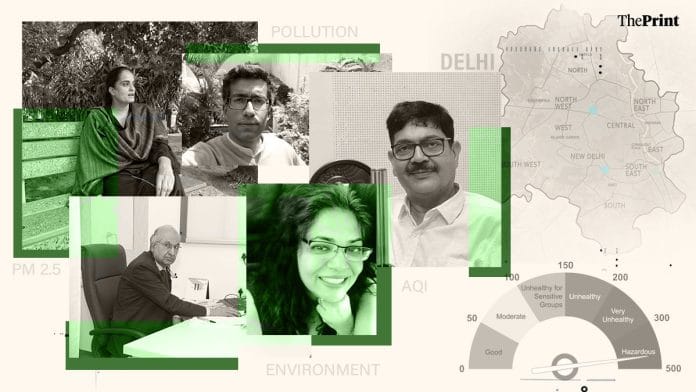



“Climate of Parties” hahaha